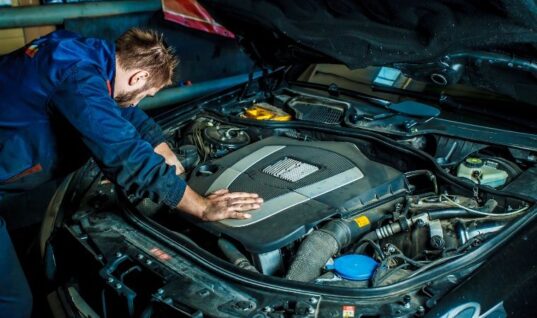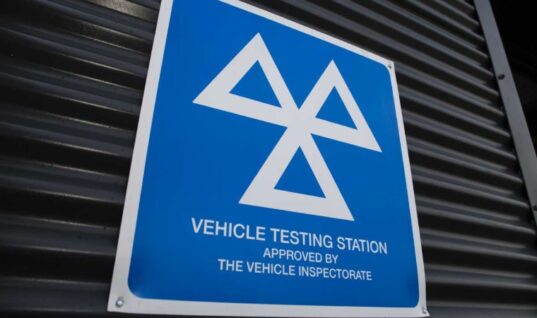The majority of professional commercial vehicle drivers want to complete their deliveries as quickly and reliably as possible. They will not want to upset their customers with delays and unforeseen costs, making minor repairs even more important.
Some minor malfunctions that are easy to prepare for are the failure of parts like bulbs, relays and fuses. In all cases driving interruptions can occur or the driver may be stopped by traffic control. Such delays cost time and are avoidable. The most important tip is therefore: always have a replacement ready.
Vehicle bulbs are wearing parts
Modern vehicle bulbs are designed for high light output, which they deliver excellently over a certain period of time. However, due to their design, no filament lasts forever. In continuous use, the filament wears out and the bulb naturally loses its luminosity.
Should it fail, it is important to have the right bulb on hand as a replacement. It is therefore advisable to keep spare bulbs in the vehicle. At the same time it ensures compliance with legal regulations.
Fast and easy bulb replacement
For each vehicle type the method of bulb replacement varies, this information is usually provided in the operating manual. However, when changing vehicle bulbs, it is also important to observe some basic safety precautions.
It is important to use gloves or a soft cloth when carrying out the work – for two reasons:
- A bulb that has just been switched off can be very hot and cause burns.
- If the glass of the bulb is touched with fingers, this may shorten its lifetime.
Relays last a long time – but not forever
If an electrical consumer in the vehicle does not work, this may be due to a defective relay. To replace a relay, a screwdriver and a replacement relay are needed, depending on the installation method.
Relays are electromagnetic switches that convert low current into high working current in the vehicle, thus enabling the function of lamps and electrical components.
Before replacing the relay, always disconnect the battery to prevent it from discharging. The installation locations of the relays usually are specified in the operating manual. They are often located in a box in the engine compartment or on the left below the steering wheel.
Usually a wiring diagram on the panel shows the location of each relay. This helps identify the correct relay. In most cases, relays are plugged in. If they are firmly seated, take care to avoid damages. If a screwdriver can be inserted underneath without touching other relays, then the relay can be carefully lifted out, alternatively the relay may have to be carefully pull out from both sides by hand.
Check relay for function by replacement
For testing, the relay is replaced by an identical one from the relay box and the battery is briefly reconnected. If, after this test, the associated component is working again, the relay must be replaced.
If the component does not function despite replacement, the old relays must be reinstalled at the original locations. Afterwards, the function of the relay used for testing must be checked to ensure that it has not been damaged. After this procedure, the relay box can be closed and the battery can be reconnected.
Possible causes of blown fuses
Fuses work as circuit breakers for the electrical voltage in the vehicle. They interrupt the circuit in the event of an over-voltage or impending short circuit. A defective fuse can make itself felt in different ways. Fuses often blow without warning due to oxidation-related wear and tear.
They can then be replaced without any problems. If a part of the electronics, for example the windscreen wiper, the windscreen heater or the radio, suddenly stops working, the root cause is not necessarily a technical defect. A possible reason might be a blown fuse due to overheating. This must be replaced with a new one.
Locate the fuse box in the vehicle
Depending on the vehicle model, the fuse box might be located in the engine compartment, under the steering column or in the trunk. Information on this can be found in the operating manual.
Check fuses with the multimeter
A circuit diagram printed on the inside of the fuse box shows the assignment of the individual fuses. A defective fuse is usually visible to the naked eye, because the transparent plastic insulation or the flat plug is blackened or charred. The metal wire inside may also be cracked or burned through. If the condition is not clear, checking with a multimeter might help.
Changing the fuse in just a few steps
- Locate the fuse box using the operation manual. In most vehicles, this is located under the hood
- or dashboard.
- Disconnect the car battery to prevent electric shocks while working on the fuses.
- Use long flat-nose pliers or tweezers to avoid damaging other fuses.
- Pull out the blown fuse using flat-nose pliers or tweezers.
- Insert a new fuse of the same type (and colour) between the spring terminals.
- Carefully tighten the terminals without bending them.
Attention: A defective fuse must always be replaced by a fuse of the same type. Wrong strength may cause short circuits or fire.







